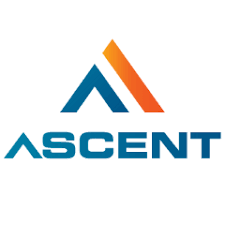
Oklahoma City’s Ascent Resources Utica LLC is one of a handful of companies collaborating with Cheniere Energy, Inc. in a project to improve greenhouse gas emissions performance at natural gas production sites.
Cheniere is considered the largest producer of liquefied natural gas in the U.S. and announced its collaboration with five natural gas producers and several leading academic institutions. The collaborative project is designed to implement quantification, monitoring, reporting and verification of the GHG emissions performance.

The engagement with the natural gas producers is intended to improve the overall understanding of upstream GHG emissions and further the deployment of advanced monitoring technologies and protocols. It will also support Cheniere’s climate strategy initiatives, including the company’s plan to provide Cargo Emissions Tags to customers beginning in 2022.

The producers participating in the project are Aethon Energy, Ascent Resources – Utica LLC, EQT Corporation, Indigo Natural Resources LLC and Pioneer Natural Resources USA, Inc.
“Collaboration with our natural gas suppliers is a key component of Cheniere’s focus on quantifying and improving environmental performance,” said Jack Fusco, President and CEO of Cheniere. “This collaboration reinforces our data-driven environmental transparency, supports our CE Tags and enhances our efforts with natural gas suppliers to monitor and verify emissions to maximize the climate benefits of Cheniere’s LNG.”
This collaborative R&D initiative will utilize multiple ground-based, drone, aerial, and satellite monitoring technologies to establish baseline emissions levels. The project will monitor sites for carbon dioxide and for both fugitive and vented methane emissions.
The initiative will also verify emissions performance and identify opportunities to reduce emissions. The initial effort will cover production wells in the Haynesville, Marcellus, Permian and Utica basins that collectively produce approximately 360 million standard cubic feet per day of natural gas, as well as multiple tank batteries.

The project is being run by a subsidiary of Cheniere and is supported by researchers from the Payne Institute for Public Policy at the Colorado School of Mines, Harrisburg University of Science and Technology, SLR International and other emissions monitoring technology providers, including Montrose Environmental, SeekOps, Bridger Photonics Inc. and GHGSat.
The QMRV R&D collaboration will also assess the technical and policy considerations related to GHG emissions management at production sites, including the scalability and the efficacy of a robust QMRV program and monitoring technologies.
“Transparency and robust data are essential to addressing emissions. The Payne Institute is pleased to be part of this project, as lessons learned will be invaluable to not just participants, but to stakeholders globally as companies and countries develop their GHG mitigation policies,” said Dr. Morgan Bazilian, Director of the Payne Institute and Professor of Public Policy at the Colorado School of Mines.





